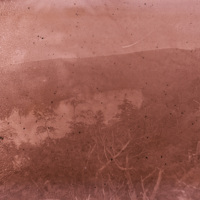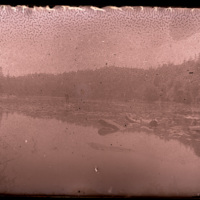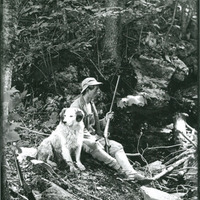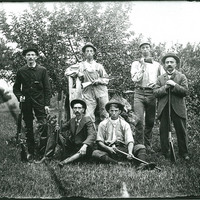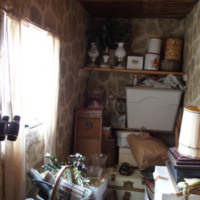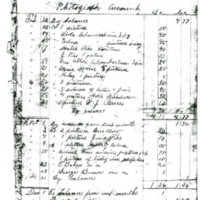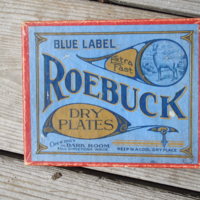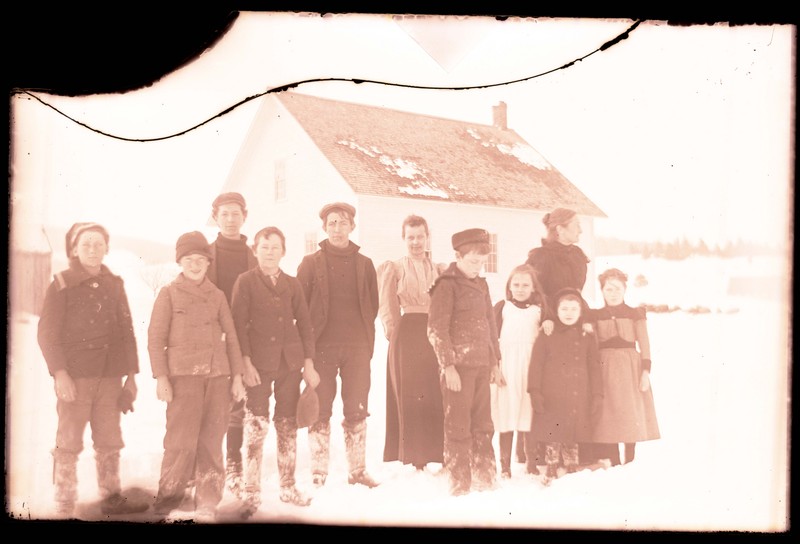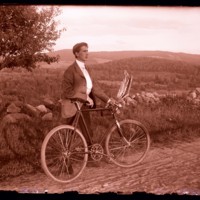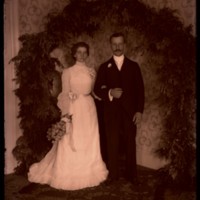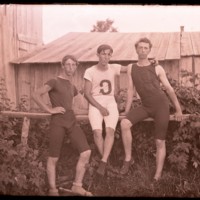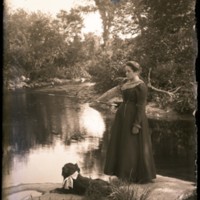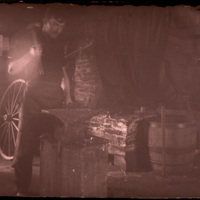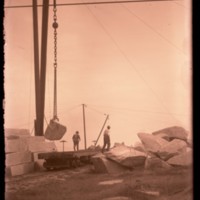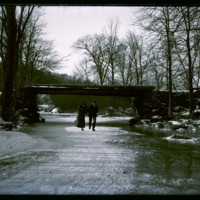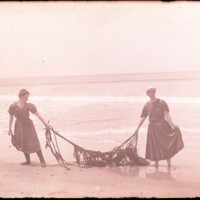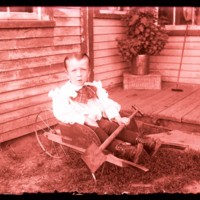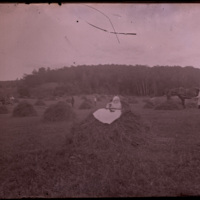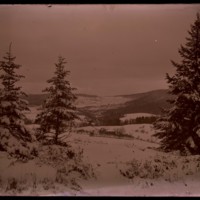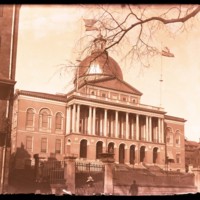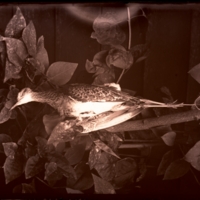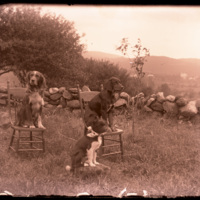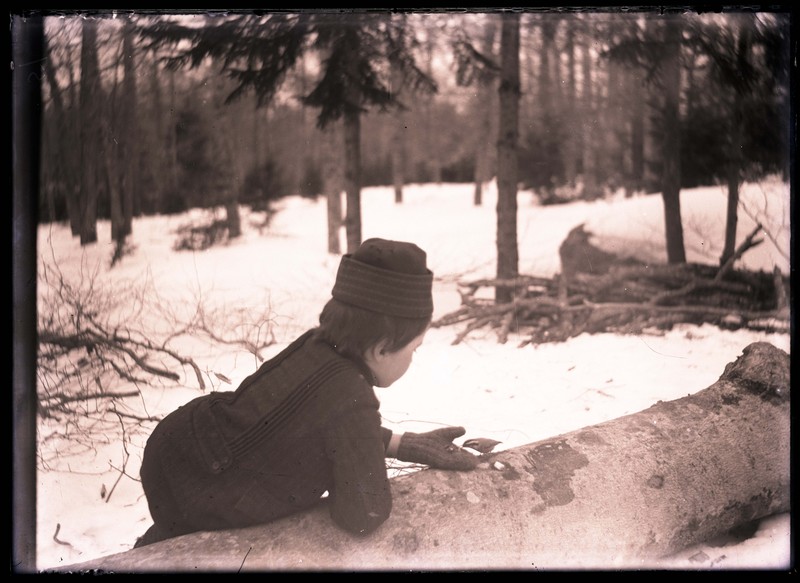Photography
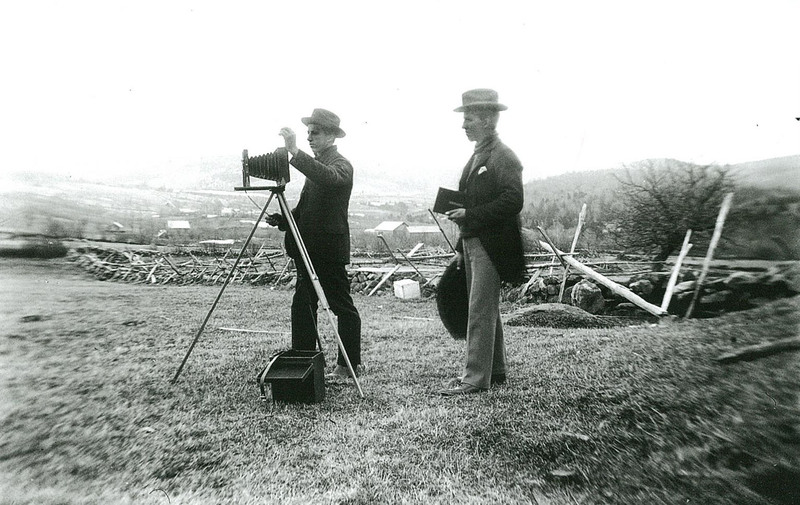
Elmer and Arthur with their Ideal Camera
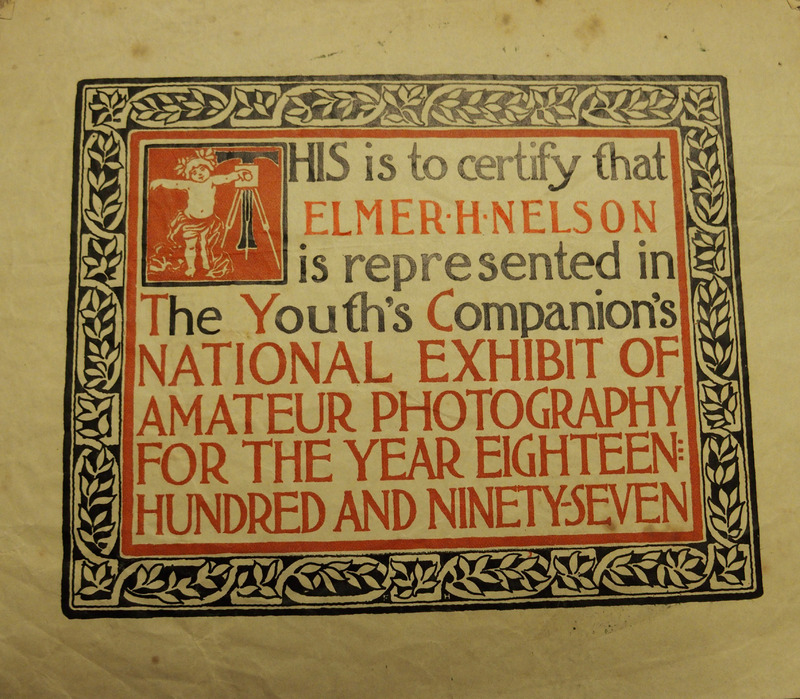
Elmer H. Nelson's certificate of participation in the Youth's Companion Photography Exhibition of 1897
Boy Photographers
Many of the Nelson's homemade books and periodicals have no date, so we can't be completely sure when their book-making activity began and when it ended. The last year we can be certain the brothers were making books is 1895 since quite a few of their periodicals (Canoe and Rifle, Little City Democrat, War News, The Weekly Telegraph, and The Western World) carry dates for that year. In 1896 the brothers discovered photography, so it may well be that the pleasures of writing books about their imaginary world was replaced by the pleasures of taking photographs of the world in which they lived.
In their journals and essays the Nelson's provide a great deal of information about their experiences with photography. This website includes a searchable collection of the hundreds of glass-plate negatives the boys ultimately shot and developed. The plates themselves are now in the collection of the Goshen Historical Society. The Nelson brothers were even more prolific photographers than they were authors!
Elmer explains how they got their first camera and became interested in taking pictures:
"During the spring and early summer of 1896, Arthur was getting subscribers for The Youth Companion in order to get himself a rifle, and among the premiums which he got was a Harvard camera using a 2-1/2 X 4 plate and a Phoenix camera using a 2-1/2 X 2 plate. We received them the 3rd of July, we like the looks of them very much and they seemed very simple. The larger one Arthur gave to me and the smaller to Walter. We were soon trying them." (Sketches of Home Life, Vol 1, p. 27)
Youth's Companion stories clearly influenced the boys' writing, in 1903 Walter would buy a parlor printing press from an advertisement in their pages, and the brothers not only got their first camera from the magazine, but the year after the Nelsons received these cameras Elmer entered some of his pictures in the Youth's Companion's amateur photography exhibition. It is interesting evidence of the cultural reach of such publications to see all the ways that this magazine influenced the boys' own cultural production.
Shooting
In Elmer's account of how the boys became photographers, Arthur had wanted the premium award of a rifle, but seems instead, or in addition, to have received these cameras. The ties between guns and cameras remain strong for the Nelson's, and after 1896 they tended to take both on their "roughin it" hunting and camping trips. Of one such expedition Arthur writes: "We each had a gun apiece, all the provisions we could lug inside and out and Otho's and our cameras" (Sketches of Home Life, Vol 2, p. 18).
Arthur's account of a hunting expedition to Mount Sunapee and Lake Solitude that the boys took in July 1896, when their cameras were quite new, gives alot of detail about their efforts to shoot chipmunks and squirrels and their efforts to shoot pictures:
"Although the boys kept their eyes open only three squrrels fell victims to their guns....
Elmer got out his camera and took a picture of the camp and the boys which would have been a beauty if it had come out alright in the developing....
When Arthur got a most to shore with his raft, Elmer again got out his camera and took a picture of the pond.... " (Sketches of Home Life, Vol 2, pp. 3-6).
By 1898 they had gotten a new, far larger and better camera, which they continued to take along on their hunting expeditions. In their accounts of these later trips they write about their success at shooting hedgehogs and in taking these more skillful pictures, including the string trick that enabled the photographer himself to appear in the picture:
"We now stopped to rest on a big ledge. While we were resting we got out the camera and took another picture, by firing the camera off with a string we suceeded in getting a picture of the whole crowd and I haven't a doubt that we felt as bad as we look in this picture for it was an awful hot day." (Sketches of Home Life, Vol 2, p. 19)
The Business of Photography
Arthur writes with great precision and pride about the boys' decision to purchase a better camera:
"After using our little Harvard Camera about a year Elmer and I decided to get a larger one.We consulted the catalogues of a half a dozen different firms for about two weeks then at last decided upon the Rochester Optical Cos. Ideal Camera made of mahogany. With reversible back and ground glass for focusing. With rack and pinion movement. Extension leather bellows. size plate used 4 1/4 X 6 1/2. Camera fitted with Single achromatic lenses and Premo shutter. Our Camera and outfit cost us twenty six dollars and sixty nine cents. It is a beauty."(Sketches of Home Life, Vol 2, p. 12)
With their new equipment the brothers went into business taking photographs of local places and people and selling the prints. They set up a darkroom in a small back room in the Gunnison House and kept accounts of their sales. Arthur and Elmer clearly had hopes of making photography their profession, but as Elmer reports it did not prove a very lucrative business:
"We have used up to the present time, March, about a hundred and twenty-five plates and have sold over 26 dozen pictures, but have sold them so low that our gain has been very small. Walter has not done much with his camera except take pictures for his own pleasure." (Sketches of Home Life, Vol 1, p. 27)
As historian of photography Sarah Greenough explains:"the introduction of small portable hand-held cameras, and the advent of a photo-finishing industry during the 1880s changed photography from a messy and complicated process to one so simple that anyone, even a child, could master its technique. Once a business clearly defined by roles and objectives, photography became a pastime, a hobby, and by 1890 the field was dominated by amateurs" (259). The Roebuck Dryplate negatives that the Nelsons used came precoated with a gelatin emulsion that made it possible to wait to develop the negatives, rather than needing to do it right away, and that made the process of development much simpler and more predictable than the earlier "wet" collodion process.
Nevertheless others did manage to make a tenable photography business in rural New England. The collection of 20,000 photographs made by another team of brothers from a New England farming family--Walter, Alvah, and George Howes of Ashfield Massachusetts--suggests what such a business would have looked like. The Howe's began their itinerant photography business in the early 1880s, as grown men. Still there are many similarities between the pictures they shot and sold of families, groups, activities, buildings, and landscapes and the photographs taken by the Nelson brothers.
Photographic Subjects
The Nelson brothers shot and developed hundreds of pictures, and experimented with a wide range of photographic genres. Many are portraits of individuals or groups (the Howes explain their preference for group portraits which let them sell multiple prints from a single plate) often posed in front of houses or at pleasurable occasions like weddings, picnics, or athletic events. Some portraits are posed in romantic or humorous ways. Many photographs, like the hunting pictures above, record the brothers' own adventures, but even their photographs of other people often show the delights of such favorite Nelson activities as bicycling and fishing.
in what are often remarkably striking images the brothers took photographs of many rural life activities recording the work of the blacksmith and of the stone quarry, the movement of a couple ice skating or of women bringing in a fishing net.
They had a fine eye for the strange or humorous details of family life on a farm: little brother Earnest in a wheelbarrow or this baby left on a haystack while the adults work in the field. The brothers' playfulness, curiosity, and joy are evident in many of the photgraphs they took.
They took photographs that record the natural beauty of New Hampshire and that celebrate grand public buildings. They arranged still-life compostions and posed dogs on chairs.
And they captured the little miracles of their world--a bird perched to eat out of a child's hand.
SOURCES
Sarah Greenough "Of Charming Glens, Graceful Glades, and Frowning Cliffs: The Economic Incentives, Social Inducements, and Aesthetic Issues of American Pictorial Photography, 1880-1902," Photography in Nineteenth-Century America, edited by Martha A. Sandweiss (Fort Worth: Amon Carter Museum, 1991), 259-281.
New England Reflections 1882-1907: Photographs by the Howe Brothers, edited by Alan B. Newman (New York: Pantheon Books, 1981).
